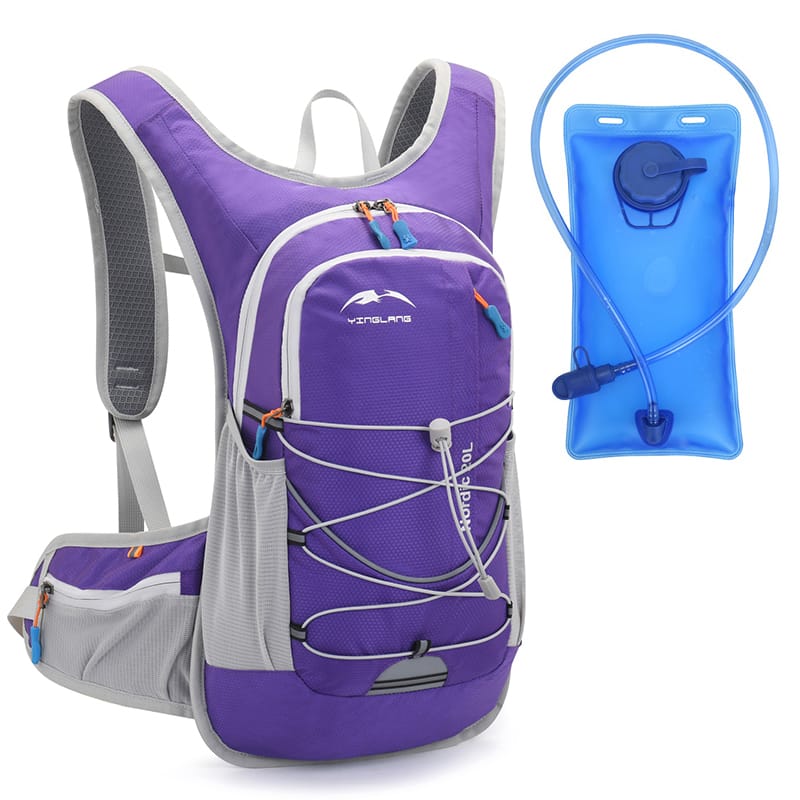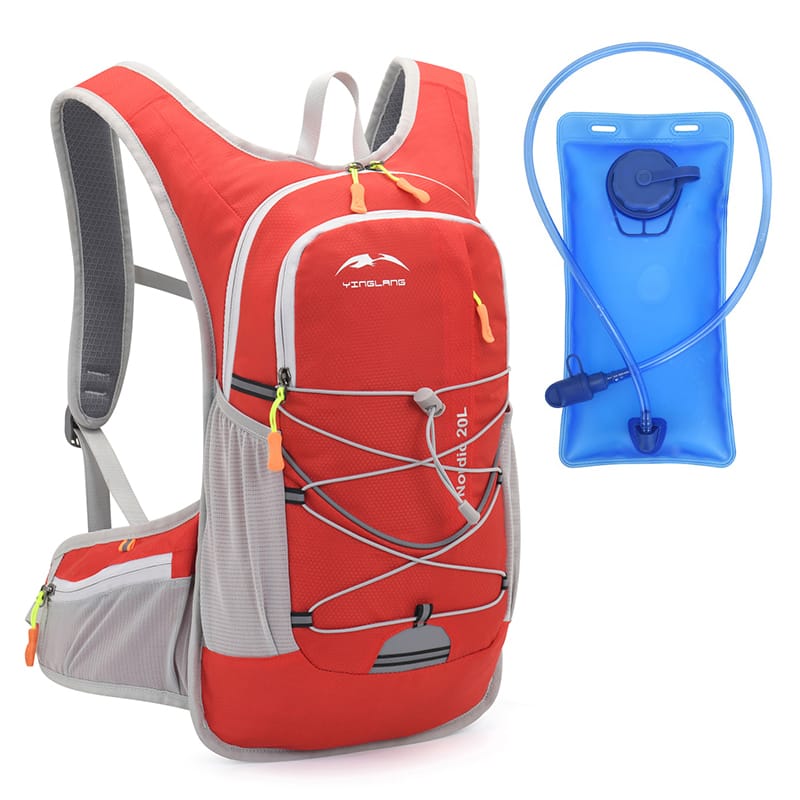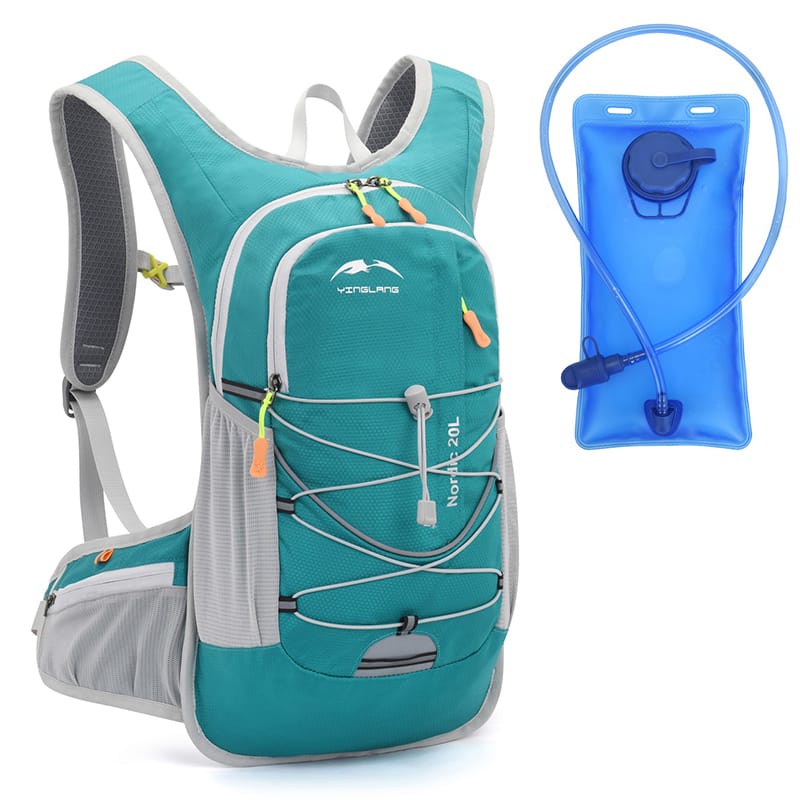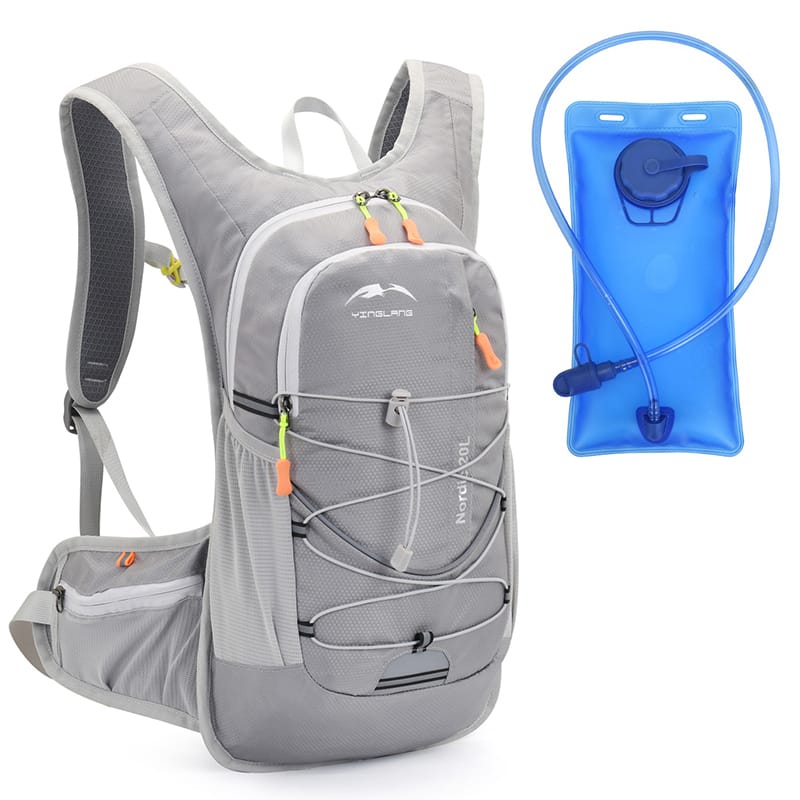As an avid hiker and outdoor enthusiast, I’ve come to rely on hydration backpacks as a must-have companion for my adventures. Whether I’m tackling a steep mountain trail or enjoying a leisurely bike ride, having easy access to water without fumbling for a bottle makes all the difference. But one question I often hear from fellow outdoor lovers is: What’s the typical capacity of a hydration backpack? It’s a valid concern, especially when you’re trying to figure out if a hydration pack will hold enough water for your trip or have enough space for your gear. Drawing from my own experiences, conversations with other hikers, and some research, I’ll break down the capacities of hydration backpacks, their uses, and how to choose the right one for your needs. Let’s dive in!

Why Hydration Backpacks Matter
Before we get into the nitty-gritty of capacities, let’s talk about why hydration backpacks are such a game-changer. Unlike traditional water bottles, these packs come with a built-in reservoir (or bladder) and a drinking tube, allowing you to sip water on the go without stopping. Plus, they double as backpacks, with compartments for snacks, clothing, or gear. Their key benefits include:
Hands-free hydration: Perfect for hiking, running, or cycling.
Compact design: Lightweight and less bulky than carrying multiple bottles.
Versatility: Suitable for various activities, from short runs to multi-day treks.
Storage: Extra pockets for essentials like keys, phones, or first-aid kits.
That said, choosing the right capacity—both for the water reservoir and the backpack’s storage—is crucial. Too small, and you’ll run out of water; too large, and you’re lugging around unnecessary weight. Let’s explore the typical capacities and what they’re best suited for.
Understanding Hydration Backpack Capacities
Hydration backpacks come in two main capacity measurements: reservoir capacity (how much water the bladder holds) and storage capacity (how much gear the backpack can carry). Below, I’ll break down the most common options for each, based on my experiences and insights from outdoor communities.

1. Reservoir Capacity: How Much Water Can It Hold?
The reservoir is the heart of a hydration backpack, and its capacity typically ranges from 1 to 3 liters. Here’s a closer look at each size and when it works best:
1-Liter Reservoirs
Best for: Short activities like 1-2 hour runs, bike rides, or casual walks.
My Experience: I used a 1-liter hydration pack for a morning trail run last summer. It was perfect for a quick 5-mile loop, keeping me hydrated without feeling weighed down. For solo activities in mild weather, 1 liter is usually enough.
Pros: Lightweight, ideal for minimalists or urban outings.
Cons: Not enough for longer trips or hot climates where you need more water.
1.5-Liter Reservoirs
Best for: Half-day hikes, moderate cycling, or group outings with water refill options.
My Experience: On a 4-hour hike with friends, my 1.5-liter reservoir was just right. We stopped at a stream to refill, but the capacity got me through most of the trek. It’s a great middle ground for most casual outdoor activities.
Pros: Balances weight and hydration needs for medium-length activities.
Cons: May fall short for all-day adventures without refill opportunities.
2-Liter Reservoirs
Best for: Full-day hikes, long bike rides, or activities in hot or dry conditions.
My Experience: During a full-day hike in the mountains, my 2-liter reservoir was a lifesaver. The trail had no water sources, and the extra capacity ensured I stayed hydrated even in the midday heat. This is my go-to size for most serious outdoor trips.
Pros: Sufficient for most day-long activities, widely available.
Cons: Slightly heavier, which might bother runners or minimalists.
3-Liter Reservoirs
Best for: Multi-day treks, desert environments, or group trips where you’re carrying water for others.
My Experience: On a two-day camping trip, I opted for a 3-liter reservoir. It was enough to cover hiking, cooking, and even sharing with a friend who ran low. However, the added weight was noticeable on steep climbs.
Pros: Ideal for extended trips or extreme conditions.
Cons: Bulky and heavy when full, not ideal for short or fast-paced activities.
Note: According to the American Hiking Society, hikers should aim for 0.5-1 liter of water per hour in moderate conditions, more in hot or strenuous scenarios. Your reservoir size should align with your activity duration and access to refill points.

2. Storage Capacity: How Much Gear Can It Hold?
In addition to water, hydration backpacks offer storage for gear, with capacities typically ranging from 2 to 30 liters. Here’s how these sizes break down:
2-5 Liters (Minimalist Packs)
Best for: Running, short bike rides, or urban adventures.
My Experience: I own a 4-liter hydration vest for trail running. It holds my 1.5-liter reservoir, a phone, keys, and a small snack—perfect for quick outings. The snug fit keeps it from bouncing, which is crucial for high-intensity activities.
Pros: Lightweight, streamlined, great for fast-paced activities.
Cons: Limited space for extra layers or gear.
6-10 Liters (Compact Day Packs)
Best for: Half-day hikes, casual cycling, or festivals.
My Experience: For a 6-hour bike ride, my 8-liter pack was ideal. It carried a 2-liter reservoir, a jacket, sunscreen, and a repair kit without feeling bulky. This size is versatile for most day trips.
Pros: Enough room for essentials without being cumbersome.
Cons: Not suited for overnight trips or heavy gear.
11-20 Liters (Day Hike Packs)
Best for: Full-day hikes, skiing, or activities requiring extra layers.
My Experience: On a winter hike, my 15-liter pack held a 2-liter reservoir, warm clothing, food, and a first-aid kit. It was spacious enough for all my needs but still felt manageable on long trails.
Pros: Versatile for most outdoor activities, good balance of space and comfort.
Cons: Can feel bulky for short trips or minimalist users.
21-30 Liters (Multi-Day Packs)
Best for: Overnight camping, multi-day treks, or carrying gear for a group.
My Experience: For a weekend backpacking trip, I used a 25-liter pack with a 3-liter reservoir. It accommodated my tent, sleeping bag, food, and water, though I had to pack carefully to avoid overloading.
Pros: Plenty of room for extended adventures or bulky gear.
Cons: Heavy and less agile, not ideal for fast-paced activities.

Choosing the Right Capacity: A Handy Guide
To make your decision easier, I’ve put together a table summarizing the best reservoir and storage capacities for various activities, along with key considerations:
| Activity | Recommended Reservoir | Recommended Storage | Key Considerations |
|---|---|---|---|
| Trail Running | 1-1.5 liters | 2-5 liters | Prioritize lightweight, snug-fitting packs to minimize bouncing. |
| Half-Day Hiking | 1.5-2 liters | 6-10 liters | Ensure enough water for 3-5 hours; include space for snacks and a jacket. |
| Full-Day Hiking | 2-3 liters | 11-20 liters | Check for water refill points; pack extra layers and safety gear for longer trips. |
| Cycling | 1-2 liters | 4-10 liters | Opt for aerodynamic designs with room for tools or spare tubes. |
| Multi-Day Backpacking | 2-3 liters | 21-30 liters | Balance water and gear needs; consider weight distribution for comfort. |
| Skiing/Snowboarding | 1.5-2 liters | 10-20 liters | Choose insulated reservoirs to prevent freezing; include space for warm clothing. |
Factors to Consider When Choosing Capacity
Picking the right hydration backpack isn’t just about numbers—it’s about matching the pack to your specific needs. Here are some factors I’ve learned to consider:
Activity Duration and Intensity
Short, high-intensity activities like running need smaller reservoirs (1-1.5 liters) and minimal storage. Longer, slower-paced trips like hiking or camping call for larger reservoirs (2-3 liters) and more gear space.
Climate and Terrain
Hot or dry environments increase water needs, so lean toward 2-3 liters. In cooler climates or areas with streams, 1-1.5 liters might suffice. For rugged terrain, ensure the pack has enough padding for comfort.
Group Dynamics
If you’re hiking solo, a smaller pack works fine. For groups, especially if you’re carrying water for others, opt for a 3-liter reservoir and 20+ liters of storage.
Refill Opportunities
If you’re near lakes or campsites with water sources, a smaller reservoir is fine as long as you bring a filter. For remote trails, prioritize larger capacities.
Body Size and Comfort
A pack that’s too large can strain your shoulders, especially for smaller frames. I always try packs on to ensure the straps and weight distribution feel right.
Pro Tip: REI’s hydration guide suggests testing a pack’s fit by filling the reservoir and walking around to check for comfort and stability.

Tips for Using and Maintaining Your Hydration Backpack
Once you’ve chosen the right capacity, proper use and care will keep your hydration backpack in top shape. Here’s what I’ve learned from trial and error:
Filling the Reservoir
Fill to about 90% capacity to avoid sloshing, and ensure the cap is tightly sealed to prevent leaks. For long trips, I pre-freeze half the water to keep it cool.
Cleaning the Reservoir
After each use, rinse the reservoir with warm water and mild soap, and let it air dry completely to prevent mold. For deep cleaning, use a cleaning tablet or a mixture of baking soda and water, as recommended by Backpacker Magazine.
Preventing Freezing in Cold Weather
In winter, blow air back into the tube after each sip to prevent freezing. Insulated reservoirs or tube covers are a worthwhile investment for subzero conditions.
Packing Smart
Distribute weight evenly, with heavier items closer to your back. I always place the reservoir in its dedicated compartment to avoid leaks onto gear.
Regular Inspections
Check for leaks or wear in the reservoir and tubes before each trip. Replace O-rings or bite valves if they show signs of cracking.
FAQs: Answering Common Questions
To wrap up, I’ve compiled some frequently asked questions about hydration backpack capacities to address any lingering doubts:
Q1: How do I know if a 2-liter reservoir is enough for my hike?
A: For a full-day hike (6-8 hours), 2 liters is usually sufficient in moderate conditions, assuming you drink 0.5-1 liter per hour. In hot weather or on strenuous trails, consider 3 liters or plan for refills.
Q2: Can I use a hydration backpack for non-outdoor activities?
A: Absolutely! I’ve used mine for music festivals, theme parks, and even long commutes. A 1-1.5 liter reservoir with 4-8 liters of storage works great for urban settings.
Q3: Are larger reservoirs harder to clean?
A: Slightly, as they have more surface area, but most come with wide openings for easy access. Use a cleaning brush or tablet for thorough maintenance.
Q4: Can I put drinks other than water in the reservoir?
A: It’s not recommended, as sugary drinks or electrolytes can promote mold growth. If you do, clean thoroughly afterward to avoid residue buildup.
Q5: How heavy is a fully loaded hydration backpack?
A: A 2-liter reservoir weighs about 2 kg when full, plus the pack and gear. A 10-liter pack with essentials might total 3-5 kg, while a 25-liter pack for multi-day trips could reach 8-10 kg.
Wrapping Up: Find Your Perfect Hydration Pack
Hydration backpacks have transformed the way I approach outdoor adventures, offering convenience, comfort, and the peace of mind that comes with staying hydrated. Whether you’re a trail runner needing a sleek 4-liter vest or a backpacker hauling a 25-liter pack for a weekend in the wild, there’s a capacity out there that’s just right for you. By considering your activity, climate, and gear needs, you can find a pack that feels like an extension of yourself on the trail.
I’d love to hear about your experiences with hydration backpacks or any tips you’ve picked up along the way. Drop a comment below, and let’s keep the conversation flowing—here’s to more hydrated, hassle-free adventures!